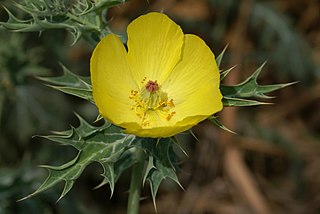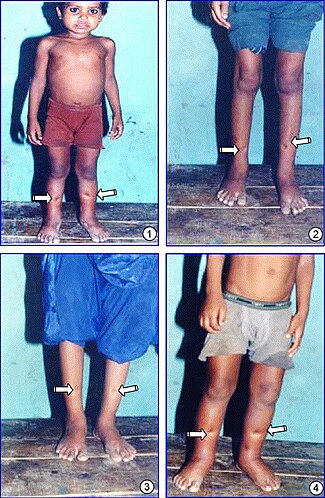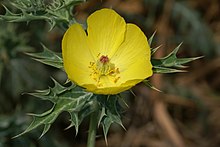
Strychnine is a highly toxic, colorless, bitter, crystalline alkaloid used as a pesticide, particularly for killing small vertebrates such as birds and rodents. Strychnine, when inhaled, swallowed, or absorbed through the eyes or mouth, causes poisoning which results in muscular convulsions and eventually death through asphyxia. While it is no longer used medicinally, it was used historically in small doses to strengthen muscle contractions, such as a heart and bowel stimulant and performance-enhancing drug. The most common source is from the seeds of the Strychnos nux-vomica tree.

Hepatotoxicity implies chemical-driven liver damage. Drug-induced liver injury is a cause of acute and chronic liver disease caused specifically by medications and the most common reason for a drug to be withdrawn from the market after approval.

Cytochrome P450 2E1 is a member of the cytochrome P450 mixed-function oxidase system, which is involved in the metabolism of xenobiotics in the body. This class of enzymes is divided up into a number of subcategories, including CYP1, CYP2, and CYP3, which as a group are largely responsible for the breakdown of foreign compounds in mammals.
Drug metabolism is the metabolic breakdown of drugs by living organisms, usually through specialized enzymatic systems. More generally, xenobiotic metabolism is the set of metabolic pathways that modify the chemical structure of xenobiotics, which are compounds foreign to an organism's normal biochemistry, such as any drug or poison. These pathways are a form of biotransformation present in all major groups of organisms and are considered to be of ancient origin. These reactions often act to detoxify poisonous compounds. The study of drug metabolism is called pharmacokinetics.

Lamprocapnos spectabilis, bleeding heart or Asian bleeding-heart, is a species of flowering plant belonging to the fumitory subfamily (fumarioideae) of the poppy family Papaveraceae, and is native to Siberia, northern China, Korea, and Japan. It is the sole species in the monotypic genus Lamprocapnos, but is still widely referenced under its old name Dicentra spectabilis, not to be confused with the North American native bleeding heart plants also classified under Dicentra. It is valued in gardens and in floristry for its heart-shaped pink and white flowers, borne in spring.

Argemone mexicana is a species of poppy found in Mexico and now widely naturalized in many parts of the world. An extremely hardy pioneer plant, it is tolerant of drought and poor soil, often being the only cover on new road cuttings or verges. It has bright yellow latex. It is poisonous to grazing animals, and it is rarely eaten, but it has been used medicinally by many peoples, including those in its native area, as well as the Natives of the western US, parts of Mexico and many parts of India. In India, during the colorful festival Holika Dahan, adults and children worship by offering flowers, and this species is in its maximum flowering phase during March when the Holi festival is celebrated. It is also referred to as "kateli ka phool" in India.

Taxus cuspidata, the Japanese yew or spreading yew, is a member of the genus Taxus, native to Japan, Korea, northeast China and the extreme southeast of Russia.

Bonny Light oil was found at Oloibiri in the Niger delta region of Nigeria in 1956 for its commercial use. Due to its features of generating high profit, it is highly demanded by refiners. Bonny light oil has an API of 32.9, classified as light oil. It is regarded as more valuable than the other oils with lower API as more high-value products are produced in the refinement. However, in Nigeria, problems due to oil spillage caused by vandalism, affects both human and the ecosystem in detrimental ways. Some experiments on animals and soil are done to figure out those impacts on organisms.
Cardiac asthma is the medical condition of intermittent wheezing, coughing, and shortness of breath that is associated with underlying congestive heart failure (CHF). Symptoms of cardiac asthma are related to the heart's inability to effectively and efficiently pump blood in a CHF patient. This can lead to accumulation of fluid in and around the lungs, disrupting the lung's ability to oxygenate blood.

Sanguinarine is a polycyclic quaternary alkaloid. It is extracted from some plants, including the bloodroot plant, from whose scientific name, Sanguinaria canadensis, its name is derived; the Mexican prickly poppy ; Chelidonium majus; and Macleaya cordata.
Persin is a fungicidal toxin present in the avocado. Persin is an oil-soluble compound structurally similar to a fatty acid, a colourless oil, and it leaches into the body of the fruit from the seeds.
Dropsy, more often called edema, is the increase of interstitial fluid in any organ.

Paracetamol poisoning, also known as acetaminophen poisoning, is caused by excessive use of the medication paracetamol (acetaminophen). Most people have few or non-specific symptoms in the first 24 hours following overdose. These symptoms include feeling tired, abdominal pain, or nausea. This is typically followed by absence of symptoms for a couple of days, after which yellowish skin, blood clotting problems, and confusion occurs as a result of liver failure. Additional complications may include kidney failure, pancreatitis, low blood sugar, and lactic acidosis. If death does not occur, people tend to recover fully over a couple of weeks. Without treatment, death from toxicity occurs 4 to 18 days later.

Senecionine is a toxic pyrrolizidine alkaloid isolated from various botanical sources. It takes its name from the Senecio genus and is produced by many different plants in that genus, including Jacobaea vulgaris. It has also been isolated from several other plants, including Brachyglottis repanda, Emilia, Erechtites hieraciifolius, Petasites, Syneilesis, Crotalaria, Caltha leptosepala, and Castilleja.

Methysticin is one of the six major kavalactones found in the kava plant. Research suggests that methysticin and the related compound dihydromethysticin have CYP1A1 inducing effects which may be responsible for their toxicity. Additionally, methysticin has been shown to potentiate GABAA receptor activity, contributing to the overall anxiolytic profile of the kava plant.
Pyrrolizidine alkaloidosis is a disease caused by chronic poisoning found in humans and other animals caused by ingesting poisonous plants which contain the natural chemical compounds known as pyrrolizidine alkaloids. Pyrrolizidine alkaloidosis can result in damage to the liver, kidneys, heart, brain, smooth muscles, lungs, DNA, lesions all over the body, and could be a potential cause of cancer. Pyrrolizidine alkaloidosis is known by many other names such as "Pictou Disease" in Canada and "Winton Disease" in New Zealand. Cereal crops and forage crops can sometimes become polluted with pyrrolizidine-containing seeds, resulting in the alkaloids contaminating flour and other foods, including milk from cows feeding on these plants.

Riddelliine is a chemical compound classified as a pyrrolizidine alkaloid. It was first isolated from Senecio riddellii and is also found in a variety of plants including Jacobaea vulgaris, Senecio vulgaris, and others plants in the genus Senecio.
In 1998, adulterated mustard oil poisoning in Delhi resulted in widespread dropsy and deaths of 60 people and illness of more than 3000. It was revealed that white oil, a petroleum product was mixed with edible mustard oil. Sale of mustard in loose quantity was banned by a court order, to prevent more health hazards. In September 1998, the ban on packed mustard oil was removed after a Cabinet decision with a condition that the date of packing should be prominently displayed. Even though mustard oil is banned as an edible oil in countries like USA, Canada and EU due to its erucic acid content, the oil is widely used as an edible oil in North India, Pakistan and Nepal.

Taxine alkaloids, which are often named under the collective title of taxines, are the toxic chemicals that can be isolated from the yew tree. The amount of taxine alkaloids depends on the species of yew, with Taxus baccata and Taxus cuspidata containing the most. The major taxine alkaloids are taxine A and taxine B although there are at least 10 different alkaloids. Until 1956, it was believed that all the taxine alkaloids were one single compound named taxine.















